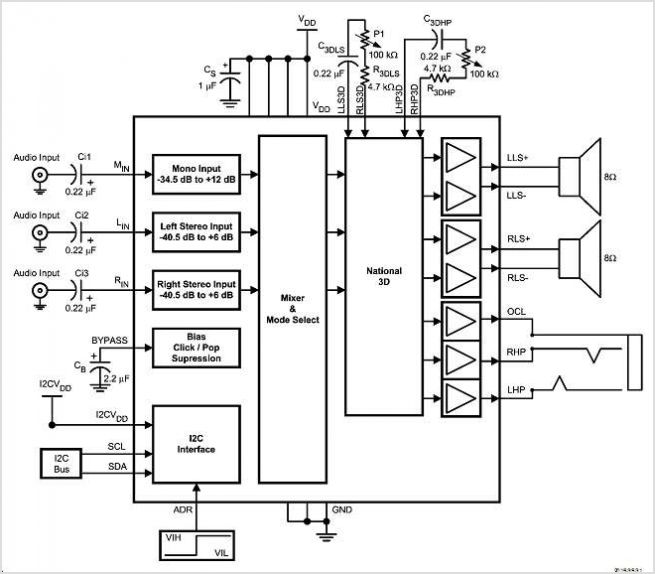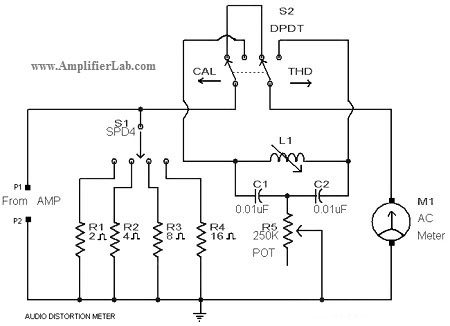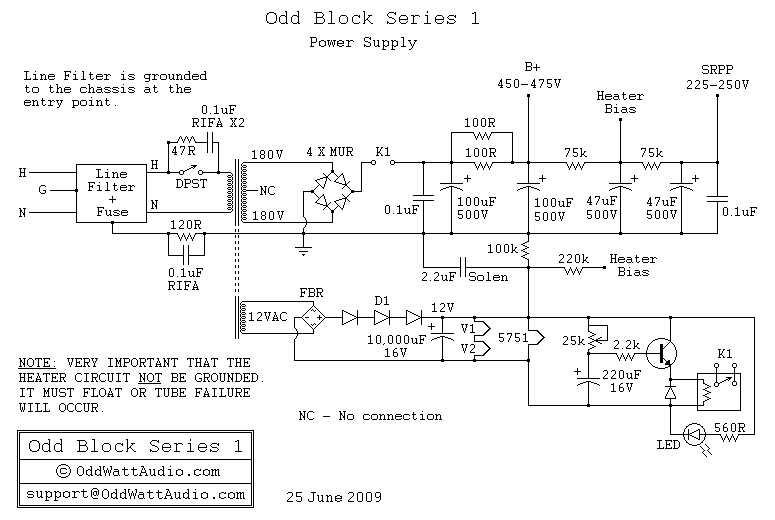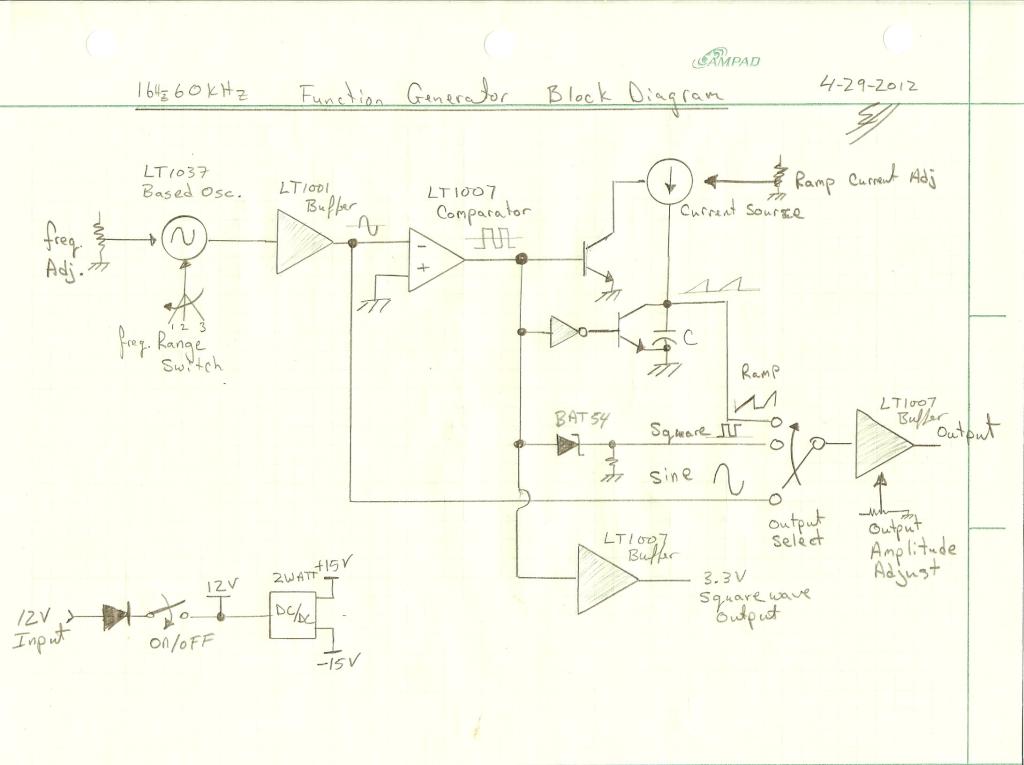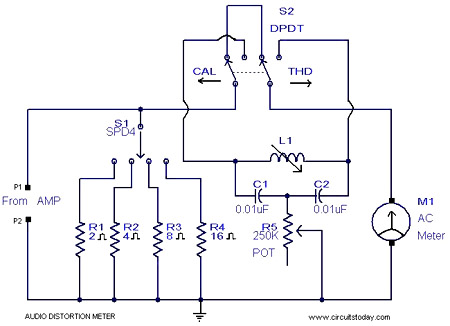
Mark Harrington Audio Tracer
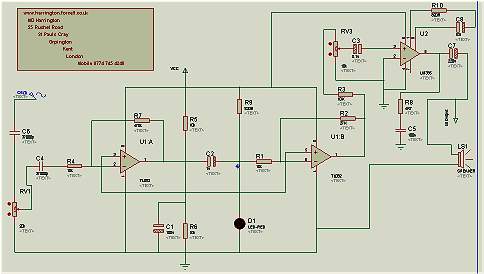
Mark Harrington Audio Tracer. The audio input is fed into the first stage op-amp via C6, RV1, C4, and R4.
The Mark Harrington Audio Tracer is a specialized audio processing circuit designed to enhance and analyze audio signals. At its core, the circuit utilizes an operational amplifier (op-amp) as the primary signal processing element. The audio input is initially coupled to the non-inverting input of the first stage op-amp through a series of components including capacitor C6, variable resistor RV1, capacitor C4, and resistor R4.
Capacitor C6 serves to block any DC offset from the incoming audio signal, allowing only the AC audio components to pass through to the op-amp. The variable resistor RV1 is used to adjust the gain of the op-amp stage, providing flexibility in the amplification of the audio signal based on the specific requirements of the application. This feature is critical for tailoring the output level to match downstream processing equipment or for adjusting the overall loudness of the audio output.
Capacitor C4 is employed to filter high-frequency noise that may be present in the audio signal, ensuring that only the desired frequency range is amplified. Resistor R4 plays a vital role in setting the gain of the op-amp and stabilizing the circuit by providing feedback, which is essential for maintaining linearity in the amplification process.
Overall, this circuit configuration allows for effective audio signal processing, making the Mark Harrington Audio Tracer a valuable tool for audio engineers and enthusiasts looking to analyze and manipulate audio signals with precision. The combination of capacitors, resistors, and the op-amp enables a versatile platform for various audio applications, from basic amplification to more complex signal analysis tasks.Mark Harrington Audio Tracer. The audio input is fed into the first stage op amp via C6 , RV1 , C4, R4.. 🔗 External reference
The Mark Harrington Audio Tracer is a specialized audio processing circuit designed to enhance and analyze audio signals. At its core, the circuit utilizes an operational amplifier (op-amp) as the primary signal processing element. The audio input is initially coupled to the non-inverting input of the first stage op-amp through a series of components including capacitor C6, variable resistor RV1, capacitor C4, and resistor R4.
Capacitor C6 serves to block any DC offset from the incoming audio signal, allowing only the AC audio components to pass through to the op-amp. The variable resistor RV1 is used to adjust the gain of the op-amp stage, providing flexibility in the amplification of the audio signal based on the specific requirements of the application. This feature is critical for tailoring the output level to match downstream processing equipment or for adjusting the overall loudness of the audio output.
Capacitor C4 is employed to filter high-frequency noise that may be present in the audio signal, ensuring that only the desired frequency range is amplified. Resistor R4 plays a vital role in setting the gain of the op-amp and stabilizing the circuit by providing feedback, which is essential for maintaining linearity in the amplification process.
Overall, this circuit configuration allows for effective audio signal processing, making the Mark Harrington Audio Tracer a valuable tool for audio engineers and enthusiasts looking to analyze and manipulate audio signals with precision. The combination of capacitors, resistors, and the op-amp enables a versatile platform for various audio applications, from basic amplification to more complex signal analysis tasks.Mark Harrington Audio Tracer. The audio input is fed into the first stage op amp via C6 , RV1 , C4, R4.. 🔗 External reference
